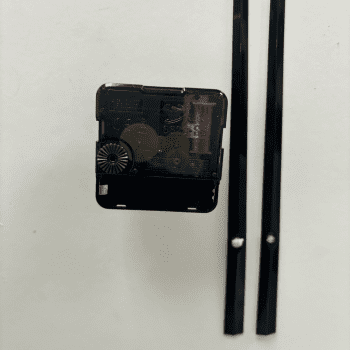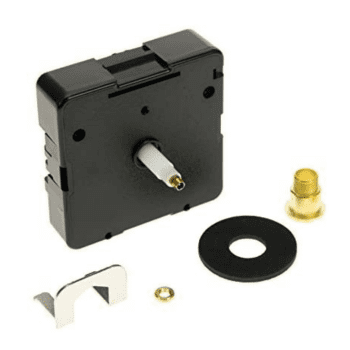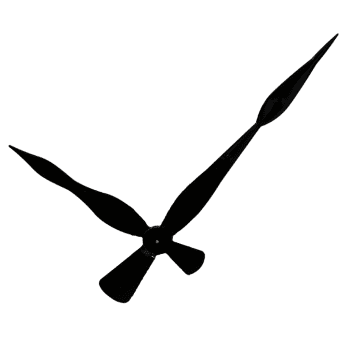Description
silent Clock Movement incl Hands
Shaft in total 28mm
Threaded Part 20mm
Hour Hand 6cm
Minute Hand 9cm
1 Year Guarantee
Quartz movement refers to a type of timekeeping technology used in clocks and watches, which utilizes the electronic properties of quartz crystals for precise time measurement. This is distinct from mechanical movements like those found in traditional, manually-wound, or automatic watches.
**How Quartz Movement Works**:
1. **Quartz Crystal Oscillator**:
– A small piece of quartz crystal is cut and shaped to vibrate at a specific frequency when an electric current passes through it. Typically, this frequency is 32,768 times per second.
2. **Piezoelectric Effect**:
– Quartz crystals possess piezoelectric properties, meaning they can convert mechanical pressure or deformation into an electrical charge, and vice versa.
3. **Electronic Circuit**:
– The vibrations of the quartz crystal are counted by a series of integrated electronic circuits. These circuits are responsible for generating regular electric pulses at one-second intervals.
4. **Stepper Motor**:
– The electric pulses from the circuit drive a small stepper motor. This motor moves the clock or watch hands, providing an accurate display of time.
5. **Battery-Powered**:
– Quartz clocks and watches are typically powered by a small battery, which usually lasts several years due to the low power consumption of the quartz movement.
**Advantages of Quartz Movement**:
– **Accuracy**: Quartz movements are highly accurate, generally with a deviation of only a few seconds per month, as opposed to many mechanical watches that can gain or lose several minutes over the same period.
– **Low Maintenance**: Unlike mechanical movements, which require regular cleaning and servicing, quartz movements are less complex and thus have minimal maintenance needs.
– **Cost-Effective**: Quartz timepieces are often less expensive to produce than mechanical ones, making them more affordable for consumers.
– **Durability**: The simpler movement, often sealed in a single module, is less susceptible to dust, moisture, and other external factors that can affect mechanical movements.
**Applications**:
Quartz movements are now ubiquitous in modern timekeeping devices, including wristwatches, wall clocks, and other timing instruments. They revolutionized the watch industry in the 1970s during the “Quartz Crisis” or “Quartz Revolution,” when many traditional watchmakers had to adapt to remain competitive.
Whether you’re referring to a wall-mounted station clock or a pocket-sized timepiece, the quartz movement technology remains a hallmark of precision and dependability in timekeeping.









Reviews
There are no reviews yet.